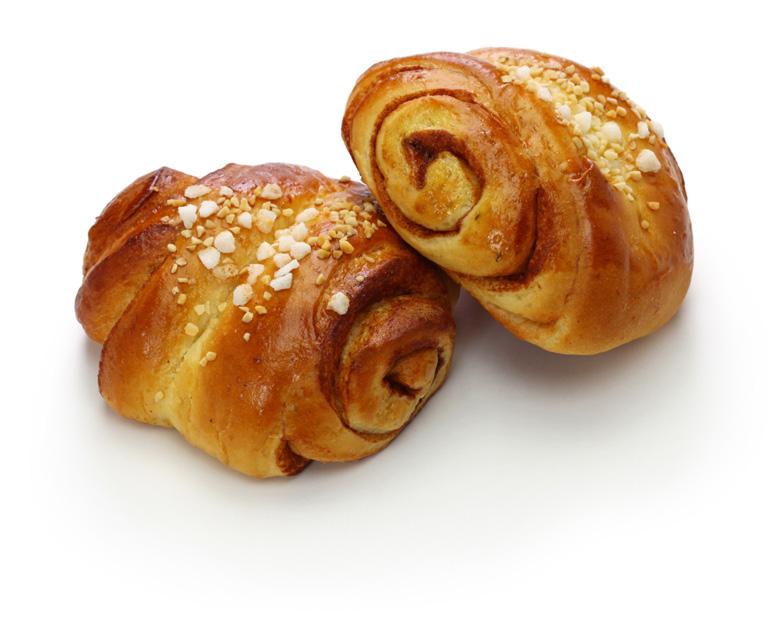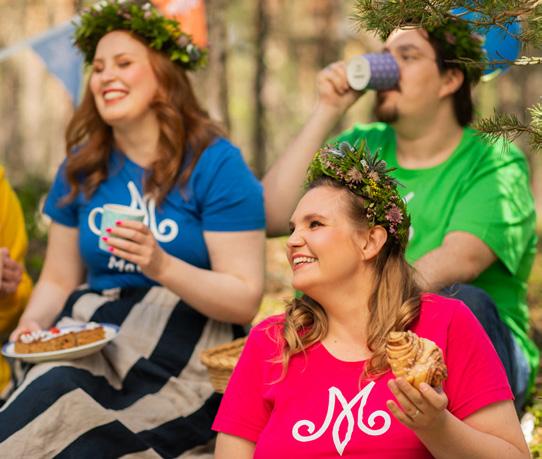Flavours of Finland


Finnish flavours make you feel good
The Finnish food culture is an uncomplicated combination of northern flavours, and skills and knowledge passed on through generations. It combines the Finnish nature’s bounty with peasant traditions and influences from the East and the West. The delicate flavours of the ingredients play the main role in Finnish cuisine. Finnish food and nutrition research is well-recognised in the world.
Finland is a country of four seasons. Each season as well as all annual festivities have their own delicacies. Finns love to eat outdoors, starting with picnics on May Day and continuing with the barbecue season which starts at Midsummer. In the summer, Finns enjoy new potatoes and herring, and fresh vegetables and berries, whereas in the autumn they prefer game and wild mushroom dishes as well as various dishes made with apples.
The Finnish nature, with its thousands of lakes and vast forests, has an enormous impact on the Finnish food culture. The right of public access, “everyone’s rights”, is a Nordic concept. In Finland it includes the right to forage for berries, mushrooms or wild greens (except protected species) for dinner tables, baking and for preserving.
How do Finns eat?
Finns typically eat 3–5 meals per day. Breakfast usually includes oatmeal or yoghurt with berries, open-faced sandwiches and coffee. A hot meal is enjoyed at lunchtime. Lunch is free in day care facilities and schools, and many workplaces offer a subsidised meal for their employees. In the afternoon, people gather for a cup of coffee with a sweet pastry, such as a biscuit or “pulla”. A hot meal is served at dinner too, often in the early evening. There might also be one or two snacks throughout the day as well as in the evening. Fun fact: Finns drink the most coffee per capita in the world!
Food culture in flux
Urbanisation, immigration and many other phenomena keep food culture in a constant state of flux. There is also a transition towards a sustainable, climate-smart and just food system. The Martha Organisation is dedicated to guiding and supporting people in making more sustainable and healthier choices.





CORNERSTONES OF FINNISH CUISINE


• Potato
• Root vegetables (carrot, parsnip, swede, beetroot, celeriac)
• Cabbage
• Peas
• Apple, rhubarb

• Wild mushrooms
• Wild berries (e.g. bilberry, lingonberry, cloudberry, wild raspberry, crowberry, sea buckthorn)
• Grains: rye, barley, oat (breads, porridges, pasties)
• Fermented dairy products: piimä, yoghurt, viili, quark
• Fish: from lakes and Baltic Sea coast (salmon, rainbow trout, Baltic herring, perch, pike, pike-perch, burbot, European whitefish)
• Meat: game, pork, beef

• Certain spices: cinnamon & cardamom (in baking), allspice, caraway





KARELIAN PASTIES WITH EGGY BUTTER – KARJALANPIIRAKAT JA MUNAVOI
Crust:
1.5 dl water
0.75 tsp. salt
3 dl rye flour
1 dl wheat flour
Rice filling:
2.5 dl water
2 dl short grain rice, also called pudding rice (In Finnish supermarkets this is often labelled “puuroriisi”.)
7.5 dl milk
0.5 tsp. salt
1 egg
To finish: melted butter and water
1. First, make the filling.
2. Add rice in boiling water and cook for 10 minutes.
3. Add milk and leave to simmer for 30 minutes stirring occasionally making sure to scrape the bottom of the pot. Then turn off the heat and leave to stew for 10 minutes with the lid on.
4. Season with salt and chill the filling.
5. Once the filling has chilled, mix in the egg.

Making the pasties:
1. Mix the flour and salt in cold water with a whisking fork. Work the dough until smooth and firm.
2. Dust the work surface with a mix of rye and wheat flour and tip the dough on it. Roll the dough until it forms a 0.5 cm thick sheet.
3. Use a pastry cutter or a drinking glass to cut out round discs.
4. Put the discs in stacks of 4–6 and cover with a plastic bag, cling film or a bowl to prevent them from drying out.
5. Using a special pasty rolling pin or a regular rolling pin, roll the discs very thin. They can be round or oval. Stack them again with a good dusting of rye flour in between and cover. Fill the crusts as quickly as possible to avoid them sticking together.
6. Lay the crusts on a work surface (you can do this in batches) and spread a tablespoon-full of filling (the thickness should be approx. 1 cm) in the middle of the disc, leaving 1 cm clear off the edges.
7. Fold two opposite edges on top of the filling and use your forefingers to push the edges into folds. Avoid pinching as this creates sharp peaks which tend to burn in the oven.
8. Transfer the pasties onto a baking tray lined with baking parchment.
9. Bake in 275–300 degrees Celsius for approx. 15 minutes.
10. Immediately after baking, brush with melted butter mixed with a dash of water.
11. Stack the hot pasties in a bowl or a platter and cover with a sheet of baking parchment and a kitchen towel. Serve with traditional eggy butter.
TRADITIONAL EGGY BUTTER PERINTEINEN MUNAVOI
4 eggs 100 g butter or margarine
1. Carefully lower the eggs into a pot of boiling water using a tablespoon and cook for 8 minutes.
2. Transfer to a bowl of cold water and leave the eggs there for a bit so the shell will be easier to remove.
3. Once the eggs have cooled, peel them.
4. Put the eggs on a large plate or bowl and crush them coarsely with a fork or use an egg cutter.
5. Mix in the soft butter or margarine.

Did you know?
The Karelian pasty received EU’s Traditional speciality guaranteed (TSG) status in 2003. The TSG label does not refer to the production location of the product but aims to emphasise the product’s traditional characteristics or method of production.


FISH SOUP – KALAKEITTO
6–8 potatoes
2 carrots
1 onion
8 dl water
1–1.5 fish stock cubes
2 tsp. salt
10 black peppercorns
500 g fish (e.g. rainbow trout)
2 dl single cream (often labelled “ruokakerma” in Finnish food packaging)
dill
Did you know?
Sustainably farmed rainbow trout is a more sustainable choice than farmed salmon.
1. Peel the potatoes and carrots. Chop the potatoes into small chunks and carrots into thin discs.
2. Peel and chop the onion.
3. In a large pot, bring the water to a boil. Add the fish stock cube(s), onions, salt and peppercorns.
4. Add carrots and potatoes.
5. Bring to a boil and allow to simmer for approx. 15 minutes or until vegetables are nearly cooked.
6. Add the single cream and heat up the soup. No need to boil at this point.
7. Dice the fish into bite-size pieces and add in to the pot.
8. Bring to a simmer and allow 3–5 minutes for the fish to cook. Do not stir so as not to break up the pieces of fish. Taste and add seasoning if you like.
9. Sprinkle with chopped dill.


